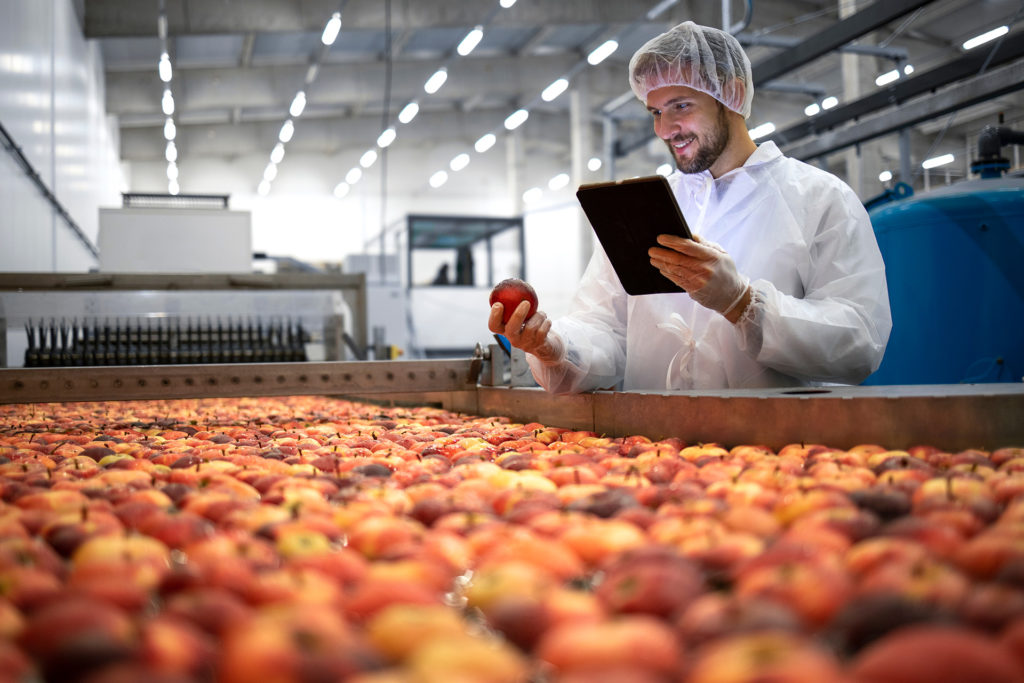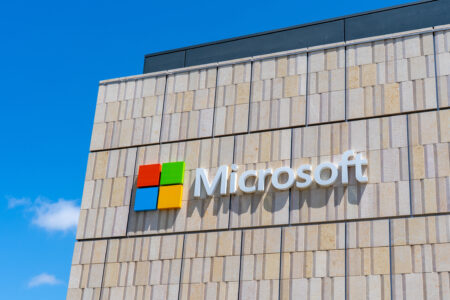A part of the Fourth Industrial Revolution, the Internet of Things (IoT) was once squarely in the “futuristic” category – something to aspire to, but not within reach for many companies.
But that’s changed.
Food and beverage manufacturers are now embracing IoT in very practical terms with very tangible benefits: They are applying the technology in processes at their facilities, in their packaging and in their transit logistics – from inventory planning to production to recall response.
IoT generates significant value for food and beverage manufacturers by discovering and collecting constructive data. Real-time data enables them to monitor operations and prevent loss daily – and even hourly. And with insights collected over time, they can proactively improve their processes and be more efficient.
Food and beverage manufacturers are implementing IoT technology:
- On the production line
- In inventory management
- In storage and other facility areas
- In the supply chain
- On packaging materials
Data collected from these IoT sensors and devices enables:
- More accurate and automated tracking and documentation for compliance
- Real-time adjustments in production and in transit to reduce waste and meet compliance
- Optimal and predictive equipment maintenance management
- Improved response capabilities for tracking recalls
- Identification of ROI-enhancing operational improvements
Some of the greatest benefits food and beverage manufacturers are gaining include:
Real-Time Data for Real-Time Response
IoT devices and sensors can be used to monitor conditions, locations and activities related to production and the products themselves, delivering data minute to minute. So long as the data is funneled into one centralized location, as in an ERP, the data can be easily accessed in real time for a holistic view. Setting alerts for certain activities also becomes easier. Thus, the ability to catch and remedy issues when they arise.
IoT sensors can identify issues in storage, on production line and in transit, so there is every opportunity to catch a problem within the product’s lifecycle. Issues range from environmental changes that could spoil product to derailed shipments, which could indicate theft, and instances of damage in transit.
This can have a substantial impact the bottom line. Consider the cost if an entire shipment is exposed to an unacceptable humidity level, threatening mold growth on product. Or the risk presented by a few degrees’ difference when storing or transporting a refrigerated product. The potential for waste – or worse, a product recall – is great if conditions can’t be monitored and adjusted in real time.
On the production line, a faulty piece of equipment could be damaging products one after another. Without IoT technology on the line, the problem may remain undetected for several hours. With real-time data and alerts, it can act to fix such problems as they’re happening, saving dozens to potentially hundreds of products from waste.
Benefits of real-time data:
- Detect and prevent theft
- Avoid spoiled or damaged product
- Identify when and where damage happened to avoid or report
- Reroute product
- Retain compliance
A Single Version of Truth for Traceability and Compliance
IoT enables manufacturers to have a single version of truth for a product’s history, which helps with compliance, traceability for recalls and even customer satisfaction.
Having that real-time data accurately tracked and documented means they can easily present the product history for compliance, including details like ingredients used, temperatures and humidity levels maintained, timing and logistics. And they’ll be better equipped to manage and adjust for compliance in real-time should conditions shift unfavorably.
At the customer level, a QR code on a product packaging can allow customers to access this history. This QR code can also make for faster, more efficient response if there’s an issue with the product.
Benefits of product history:
- Optimize traceability
- Retain and document compliance
- Identify food safety issues along history
- Respond quickly and efficiently to recalls
- Satisfy customer with thorough information
Collected Insights for Better Decision-Making
The insight food & beverage manufacturers gain from the data pouring in from an IoT devices and sensors is a gold mine for making improvements across the business. Manufacturers can use data analytics to make better decisions and plan more effectively every day, improving in the areas of maintenance, logistics, inventory and even employee productivity.
For instance, IoT sensors in the inventory processes deliver data, which, collectively, can reveal where items frequently stock out and where there is a dead inventory, so they can optimize stocking process. Additionally, real-time inventory data means manufacturers can see more accurately what they have on-hand, particularly if their data is centralized in an ERP.
In transit, use insights to optimize shipping routes. Certain routes might have frequent issues or cost more than necessary, and data analytics can help see these instances clearly. Ultimately, businesses might even find that certain routes are unprofitable altogether.
For employee productivity, IoT technology can automatically track and submit data that might have previously required manual entry and staff attention. It also reduces the likelihood of errors. Thus, this streamlines operations, allowing employees to shift to more productive work. The data may also reveal inefficiencies in processes that can improve.
Finally, one of the most substantial benefits of collective data from IoT devices is optimizing uptime and reducing waste through better equipment maintenance and management. IoT technology can tell you which equipment is being less productive and taking more energy, for example. It can signal a potential upcoming repair or failure. And with insights from data, it is possible to develop a better maintenance plan that allows to foresee downtime or avoid it altogether.
Benefits of collected insights:
- Improve inventory processes and optimize stocking
- Reduce equipment downtime
- Reduce food waste
- Optimize shipping routes and other logistics
- Improve staff productivity
Now is the time to embrace IoT
Food & Beverage manufacturers can tackle some of their biggest challenges by integrating IoT into their technology strategy:
- Food waste and shrinkage
- Traceability
- Maintenance and repairs
- Quality control and improvement
Today’s market demands a more sophisticated approach to operations. Thankfully, powerful technology like IoT is no longer aspirational: It’s here now and ready for food and beverage manufacturers to apply for greater control and visibility at every step of the production process.







